Removal of floating fat from waste water in the food industry
A milk processing company produces milk powder. In a vacuum evaporator, water is extracted from the milk. Approx. 15 % of the milk will be processed to milk powder. Approx. 85 % of the milk is water. In order to separate the water from the solid parts, the water has to be evaporated under vacuum.
Situation
After condensation, the water is discharged. The 30 °C warm waste water is contaminated with a small amount of fat. Before discharging into the municipal sewer system, the fat has to be separated from the waste water. The waste water treatment plant of the company uses a settling basin in order to separate the fat on the water surface. Every day, a layer of approx. 2 cm to 3 cm fat builds up on the water surface. The company used a floating open chute to separate the floating fat from the water. In fact, they did not separate only fat, but a mixture of 80 % water and 20% fat. Because the fat is very sticky and not liquid, they had to clean the surface with scrapers by hand. The mixture of fat and water was given away as waste to a waste management company.
In order to reduce the cost for the waste, the customer was looking for a system that separates the fat without water.
Solution: FRIESS oil skimmer model S 100
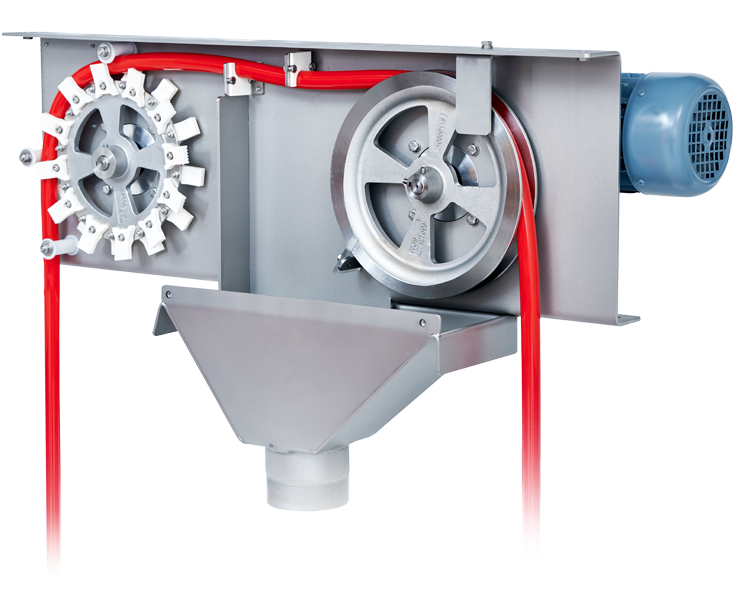
At the show Maintain in Munich, the maintenance manager of the company saw the FRIESS oil skimmer model S 100 in operation. The simple construction and the reliable removal of floating oil and fat convinced the team of the company Bayerische Milchindustrie eG at once. The maintenance manager had some doubts whether the oil collector tube of the oil skimmer will remove the floating fat. During a visit to the company, the local sales agent of FRIESS demonstrated the technology with a sample of the oil collector tube. A sample of the oil collector tube was drawn through the floating fat. The test showed clearly that the fat balls and particles stuck to the oil collector tube. In addition, the test showed that the oil collector tube will not work at thicker fat layers (5 cm or more).
In this case, the fat will form a hard layer and the particles will not stick to the oil collector tube. The maintenance team and the FRIESS sales agent agreed upon a test with an oil skimmer S 100 under working condition. Before the installation of the rental unit, the floating, hard fat layer was removed by hand. After cleaning of the surface, the oil skimmer S 100 was installed and started. The test showed clearly that the fat particles stuck to the oil collector tube. As soon as the particles showed up on the surface of the water, they were removed. During operation of the oil skimmer, the water surface remains nearly clean. There was no fat layer on the surface anymore.
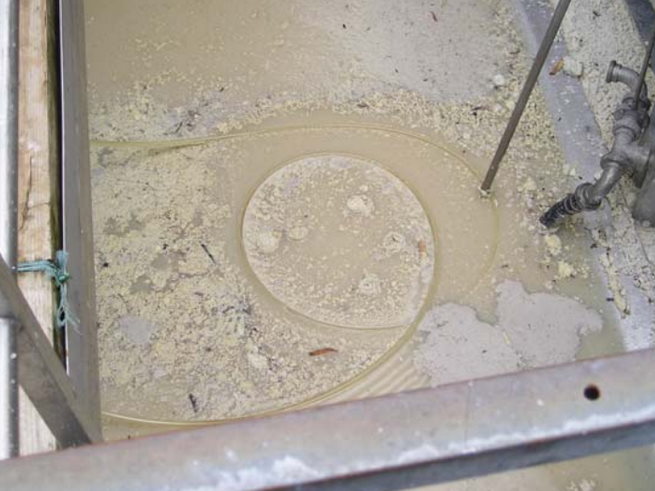
Result
The amount of water in the fat reduced by the oil skimmer was less than 20 %. Even with the rental unit, they were able to reach much better values and were able to reduce their waste disposal cost.
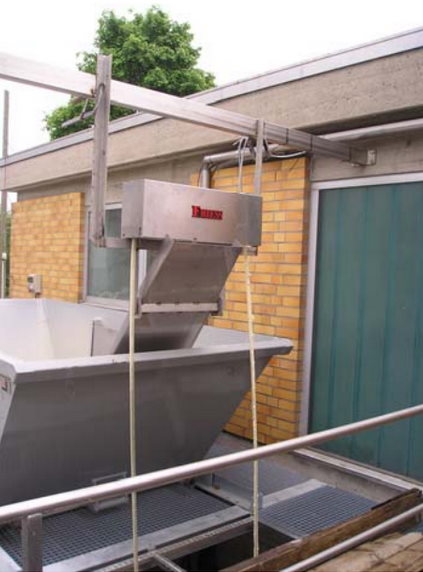
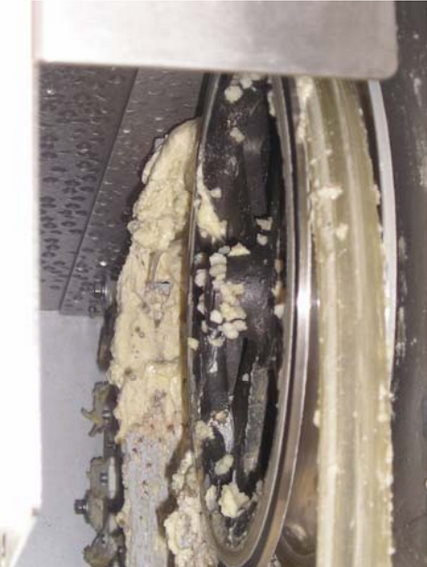
In order to sell the dry fat without water to a bio energy company, the complete system was improved:
- The oil skimmer was equipped with additional heaters so that no fat will build up between drive wheel and pulley wheel.
- The standard oil collecting pan was replaced by an open chute which is easy to clean.
- The fat is collected in a special designed container. Both sides of the container are equipped with additional chambers. The chambers are separated with sieves from the rest of the container. The water flows through the sieves into the additional chambers and from there back into a waste water system.
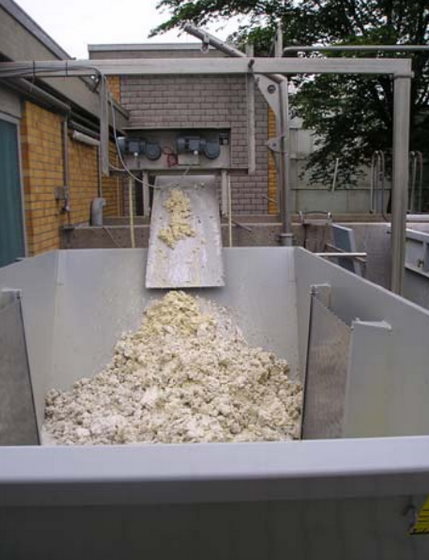
Because of using the FRIESS oil skimmer model S 100 many improvements were realised:
- The amount of waste was reduced by 80 %.
- They do not have to pay for the discharge of the fat but can sell the fat which is now used for production of biogas.
- Maintenance and cleaning of the settling basin was reduced drastically.
- The payback time for the oil skimmer and the installation of the oil skimmer was less than 4 months because of reduced cost for disposal of the waste.
